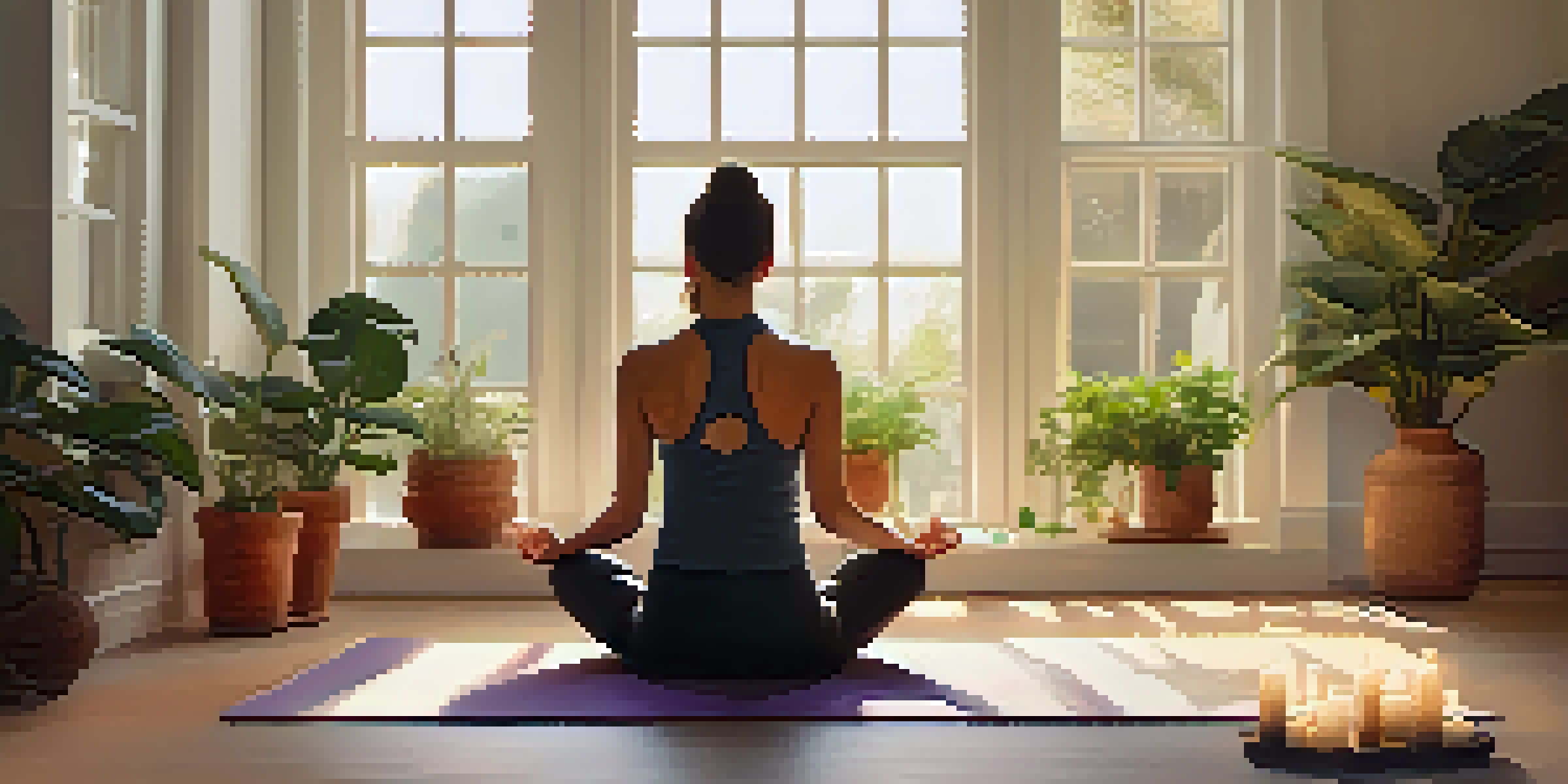Integrating Mindfulness in Yoga for Seasonal Affective Disorder

Understanding Seasonal Affective Disorder (SAD)
Seasonal Affective Disorder, or SAD, is a type of depression that occurs at certain times of the year, usually in winter when daylight is limited. For many, this can lead to feelings of sadness, lethargy, and a general sense of disconnect from the world. Recognizing these symptoms is the first step in addressing them.
In the midst of movement and chaos, keep stillness inside of you.
The cause of SAD is often linked to the lack of sunlight, which can disrupt our internal body clock and decrease serotonin levels. As the days grow shorter and the nights longer, it’s easy to feel overwhelmed. Understanding this condition can empower individuals to seek out effective coping mechanisms.
Integrating practices like yoga and mindfulness can provide relief by fostering a sense of connection and awareness. By focusing on the present moment, individuals can counteract negative thoughts and emotions often associated with SAD.
The Role of Mindfulness in Yoga Practice
Mindfulness is the practice of being fully present and engaged in the moment, without judgment. In yoga, this translates to focusing on your breath and body movements, allowing you to tune out distractions and connect deeply with yourself. This connection can be especially helpful for those experiencing SAD.

When you practice mindfulness in yoga, you create a space for self-reflection and emotional processing. This can lead to greater awareness of your feelings and thoughts, helping to reduce anxiety and depressive symptoms. It's like giving yourself permission to feel and acknowledge what you're going through.
SAD Affects Mood in Winter Months
Seasonal Affective Disorder (SAD) is a type of depression that typically arises in winter due to reduced sunlight, leading to feelings of sadness and lethargy.
Incorporating mindfulness into your yoga routine can be as simple as focusing on your breath during each pose. This intentional focus can help ground you, making it easier to navigate the emotional ups and downs that come with SAD.
Creating a Mindful Yoga Routine
To effectively integrate mindfulness into your yoga practice, consider establishing a routine that resonates with you. Start by choosing a comfortable space where you can practice without interruptions. This environment can enhance your ability to focus and engage with your practice.
The mind is everything. What you think you become.
Begin each session with a few moments of stillness, allowing your mind to settle before diving into the physical aspects of yoga. You might close your eyes, take deep breaths, and set an intention for your practice. This simple act can create a sense of purpose and clarity for the session ahead.
As you move through your poses, keep returning to your breath. If your mind wanders, gently guide it back to the sensations in your body. This practice of redirection is key to cultivating mindfulness and can help you remain anchored during challenging times.
Specific Yoga Poses for SAD Relief
Certain yoga poses can be particularly beneficial for combating the symptoms of SAD. For instance, poses like Child’s Pose and Legs-Up-the-Wall can promote relaxation and reduce stress. These restorative positions can help you feel more grounded and connected to your body.
Incorporating heart-opening poses such as Camel Pose and Cobra can also counteract feelings of heaviness often associated with SAD. These poses encourage the flow of energy and can uplift your mood by expanding your chest and allowing for deeper breaths.
Mindfulness Enhances Yoga Practice
Incorporating mindfulness into yoga can help individuals process emotions and reduce anxiety, making it a valuable practice for those with SAD.
Finally, incorporating gentle twists can aid in detoxification and promote a sense of renewal. Each pose offers a unique benefit, so experimenting with different ones can help you find what resonates best with your emotional state.
The Power of Breathwork
Breathwork, or pranayama in yoga, is a crucial element that enhances the mindfulness experience. Focusing on your breath not only calms the nervous system but also helps clear your mind. Techniques like deep belly breathing can create a sense of peace and relaxation, which is particularly beneficial for those experiencing SAD.
Inhale deeply through your nose, allowing your abdomen to expand, and exhale slowly through your mouth. This practice can help anchor you in the present moment, making it easier to navigate difficult emotions. Over time, consistent breathwork can significantly improve your overall emotional well-being.
Incorporating breathwork into your daily routine, even outside of yoga practice, can foster resilience against the symptoms of SAD. Whether you take a few minutes to breathe deeply in the morning or during moments of stress, it can serve as a powerful tool for managing your emotional landscape.
Mindfulness Meditation as a Complement
In addition to yoga, mindfulness meditation can be a powerful ally in managing SAD. This practice involves focusing your attention and eliminating distractions, allowing you to cultivate a deeper sense of awareness. Just a few minutes each day can make a significant difference in your emotional health.
Consider starting with guided meditations that focus on self-compassion and acceptance. These themes can be particularly important when grappling with the feelings of worthlessness that sometimes accompany SAD. By nurturing a kinder inner dialogue, you can soften the harshness of your inner critic.
Community Support is Essential
Seeking support from friends, family, or yoga communities can significantly alleviate feelings of isolation and foster a sense of belonging for those experiencing SAD.
Combining mindfulness meditation with your yoga practice can create a holistic approach to emotional well-being. Together, they can help you develop a more profound sense of inner peace, making the winter months feel a little brighter.
Seeking Support and Community
While mindfulness and yoga can be powerful tools for managing SAD, it's essential to remember that you're not alone. Seeking support from friends, family, or mental health professionals can be incredibly beneficial. Sometimes, simply talking about your feelings can bring relief and understanding.
Joining a yoga class or community can also provide a sense of belonging and support. Sharing your experiences with others who may be going through similar challenges can foster connection and reduce feelings of isolation. Plus, practicing together can create a motivating and uplifting environment.

Finally, consider integrating other self-care practices into your routine, such as journaling or spending time in nature. Each step you take towards self-care can help cultivate resilience and a brighter outlook during the darker months of the year.